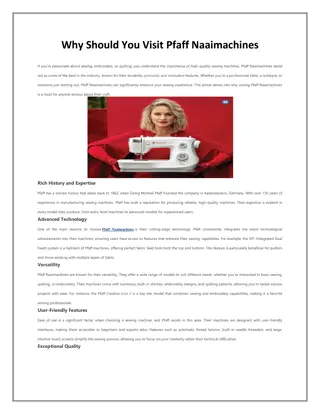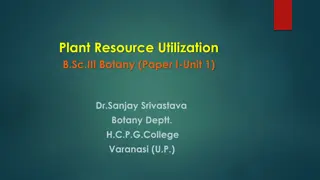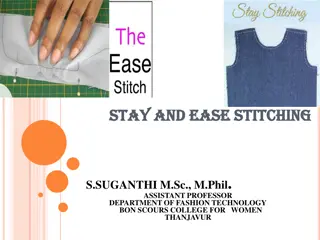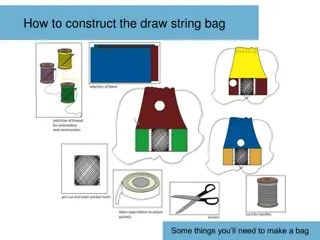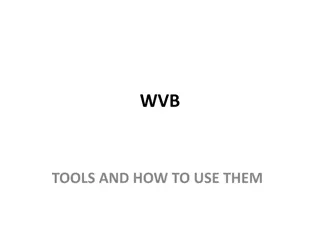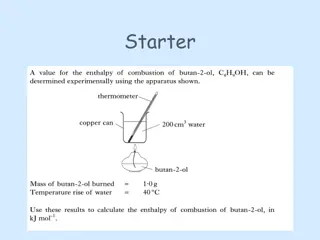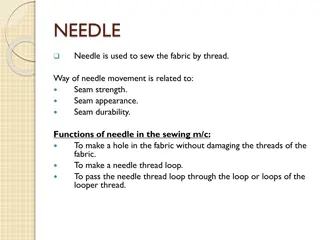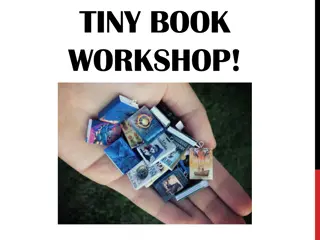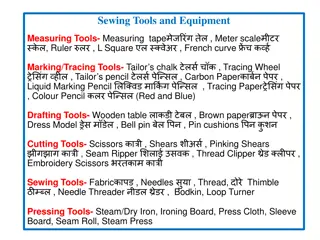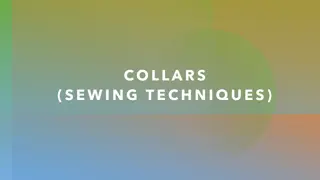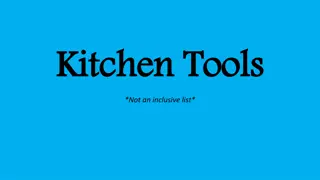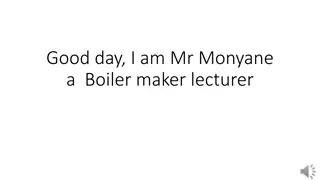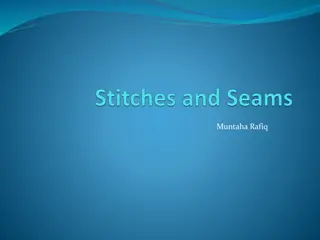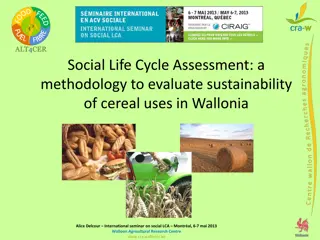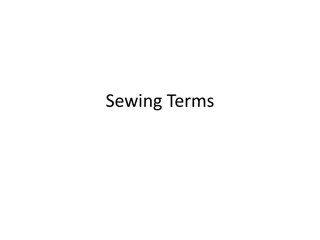Essential Sewing Tools and Their Uses
Scissors, shears, pins, needles, and other sewing tools play vital roles in the craft of sewing. Learn about the differences between scissors and shears, the various types of needles for different sewing tasks, and the importance of pins in holding fabric together. This comprehensive guide covers essential sewing tools and their specific uses.
Download Presentation

Please find below an Image/Link to download the presentation.
The content on the website is provided AS IS for your information and personal use only. It may not be sold, licensed, or shared on other websites without obtaining consent from the author. Download presentation by click this link. If you encounter any issues during the download, it is possible that the publisher has removed the file from their server.
E N D
Presentation Transcript
Scissors Shears Pinking Shears Pins Pin Cushion Magnetic Pin Machine Needle Hand Sewing Needles Tailor's Chalk Needle Threader Liquid Seam Sealant Dissolvable Basting Thread Yard Stick Hem Gauge Seam Gauge Seam Ripper Tracing Wheel Tracing Paper Tape Measure Loop Turner Point Turner Glue Stick Basting Tape Fusible Web Bobbin Thimble Sewing Thread Fabric marking
Scissors. Scissors have shorter blades than shears and the handles have small, matching holes. They are used to trim seams, clip curves, and open buttonholes. Shears. Shears are used to cut fabric and should never be used on paper. The handles are different sizes so they will fit your hand. Pinking shears or scalloping shears. Pinking shears make zigzag-shaped cuts and scalloping shears make scalloped cuts. These shears are used to finish raw edges.
. SHEARS: Shearsare used to cut fabric and should never be used on paper. The handles are different sizes so they will fit your hand. SCISSORS: Scissors have shorter blades than shears and the handles have small, matching holes. They are used to trim seams, clip curves, and open button holes. PINKING AND SCALLOPING SHEARS: Pinking shears make zigzag- shaped cuts and scalloping shears make scalloped cuts. These shears are used to finish raw edges.
. Pins. Pins hold patterns on fabric during cutting and marking. They also temporarily hold layers of fabric together. For easy handling, use plastic- or glass-headed dressmaker pins. For knit fabrics, try ballpoint pins, which have rounded points that slide easily between fibbers rather than piercing them. Silk pins are finer pins used for delicate fabrics or easier insertion. T-pins are heavier and are used for pinning heavy fabrics and craft projects. A pincushion stores pins so you can grab them one at a time. An emery bag is often attached to a pincushion. It is used to sharpen pins and needles by repeatedly jabbing them into the bag.
. Needles. A wide variety of needles are available. For instance, there are special needles for embroidery, leather work, beading, and darning. The needle you select will depend on the task, size of thread, and the fabric being used. Generally, finer threads and delicate fabrics require sharper, more slender needles. Some types of needles come in a range of sizes. The smaller the size, the thicker and longer the needle will be. Select an assorted package of needles so you will have a variety of sizes available for different sewing tasks. Sharps are used for all-purpose sewing. They are medium length with small, rounded eyes. Ballpoint needles are for all-purpose sewing on knits. They have a special rounded tip that enables the needle to slide between threads rather than piercing them. Betweens are short needles with small, rounded eyes. They are used for handwork and quilting. Needle threaderis a small disk with a loop of wire attached. The wire loop is inserted through the eye of the needle. Thread is passed through the loop. The thread is drawn through the eye of the needle when the threader is pulled back out of the eye.
. A thimble helps protect the middle finger while guiding a needle, especially through dense or heavy fabric. Plastic and metal thimbles are available in sizes 6 to 12. Some animal skin thimbles are "one size fits all." Select a size that gives you a snug fit.
. TAPE MEASURE: A tape measure is made from fabric or flexible fiberglass. It is used to take body measurements and measure fabric and pattern pieces. Tapes should be sturdy and nonstretch. YARDSTICK: As the name implies, a yardstick is one yard in length. It can be used for measuring skirt hems and other tasks that require a long, rigid measuring tool. SEAM GAUGE: A seam gauge is a ruler with an adjustable marker for measuring seam allowances and hems. HEM GAUGE: A hem gauge is a multipurpose measuring tool. It has a curved hemshaped side that is used to mark standard hem depths. It also has a straight side that is used like a ruler.
. TRACING PAPER AND WHEEL: Tracing paper is coated paper that comes in an assortment of colors. It is available either in color that must be washed out of the fabric or that will disappear on its own. Working on a hard flat surface, slide the paper under the pattern and between the layers of fabric. The colored side of the paper will be toward the wrong side of the fabric. Gently run the tracing (marking) wheel along pattern markings. Use the wheel with a serrated edge to mark firmly woven, medium to heavyweight fabrics. Use the smooth edge wheel to mark delicate, lightweight fabrics. TAILORS CHALK: Chalk takes many forms, including pencil, powder, and small pieces. It is available in a limited number of colors. Choose a color that will be visible on your fabric. Make chalk marks directly on your fabric.
C A
M T
W I
DO YOU HAVE ANY QUESTIONS? 1. 2. 3. 4. 5.








